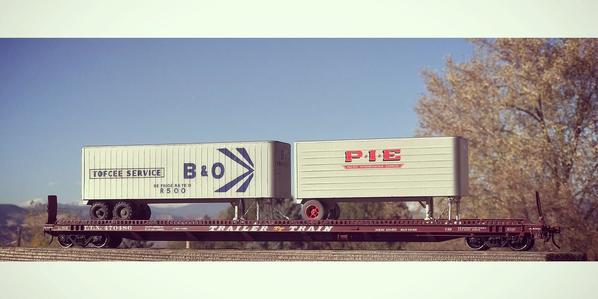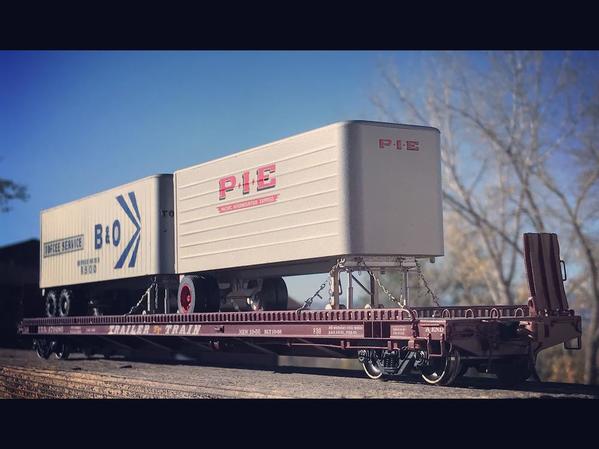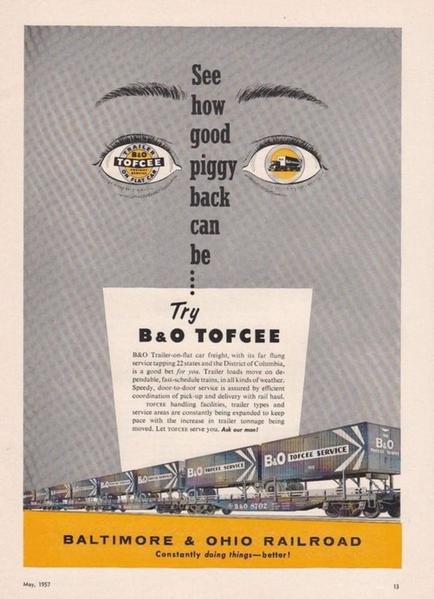Added a few new trailers to the mix and found some neat TTX data from a fellow who was an executive at the company in the 70's. The following list was hand written and I typed it out for those of you who may find it of interest.
Early TTX Cars
F39 470400-470599 200 cars built by Bethlehem Steel 1/3/55-2/28/55 Jacks, chains, chocks, safe posts
F39A 470600-470749 150 cars built by Altoona Car Shops 6/28/55-9/16/55
F39B 470750-470799 50 cars built by Altoona Car Shops 7/26/55-10/9/55
F39A 470800-470899 100 cars built by Altoona Car Shops 11/13/55-1/26/56
F39B 470900-470909 10 cars built by Havelock for the CB&Q 1955 acquired from the CB&Q 1956
F39A 470910-470929 20 cars built by A.C.S Shops 4/23/57-6/11/57 this series were the first to carry Model A Hitches, Safety Posts continue
F39C 470930-471129 100 cars built by SAM REA Shops 4/23/57-12/2/57
F39C 471130-471229 100 cars built by SAM REA Shops 10/18/57-12/2/57
F30D 475001-475086 86 cars built by SAM REA Shops F30D's were not given new or rebuilt status when converted and retained original built dates. F30G's were considered new although reclaimed F30A body castings were utilized. 10/9/57-12/27/58
F30G 475087-475286 200 cars built by SAM REA Shops F30G's were considered new although reclaimed F30A body castings were utilized. 8/6/58-9/26/58
F85A 472000-472399 400 cars built by ACF F85A,B were built through 1963, eventually totaling 7372 cars. Including F85C, D, E, F. The F85's totaled 10,586 by 1964 plus another 100 F85M lengthened from F39 series. 12/1/58-1/1/59 Model A Hitches
F85B 473000-473399 400 cars built by Pullman-Standard 12/1/58-1/1/59
This hand written compilation by RWD of TTX 8/4/76
Car classes and descriptions
F30D 50' -standard level car with cast steel
Under-frame.
F30G 50' -standard level car with cast steel under-frame
F39 75' -standard level car
F39A 75' -standard level car
F39B 75' -standard level car with cast steel under-frame
F39C 75' -standard level car
From page A-21 TTX


















































































